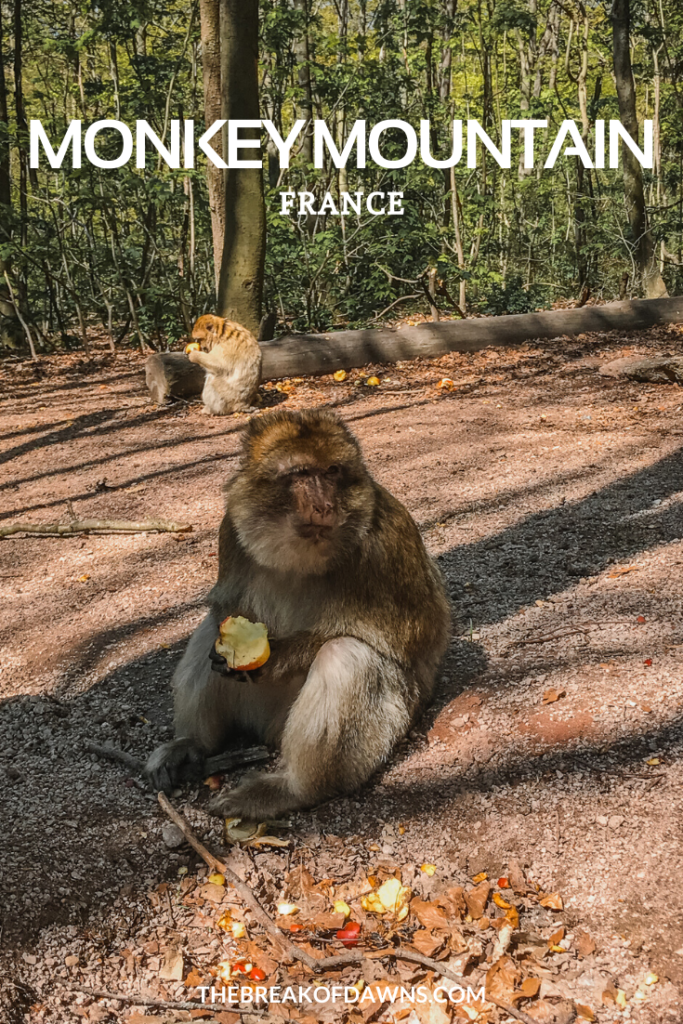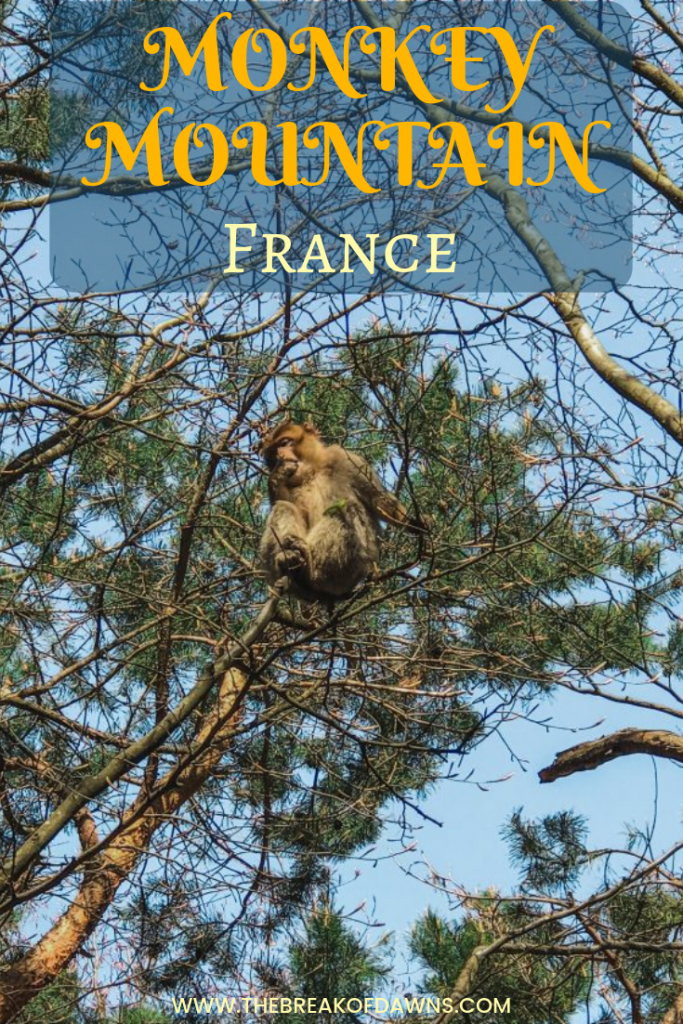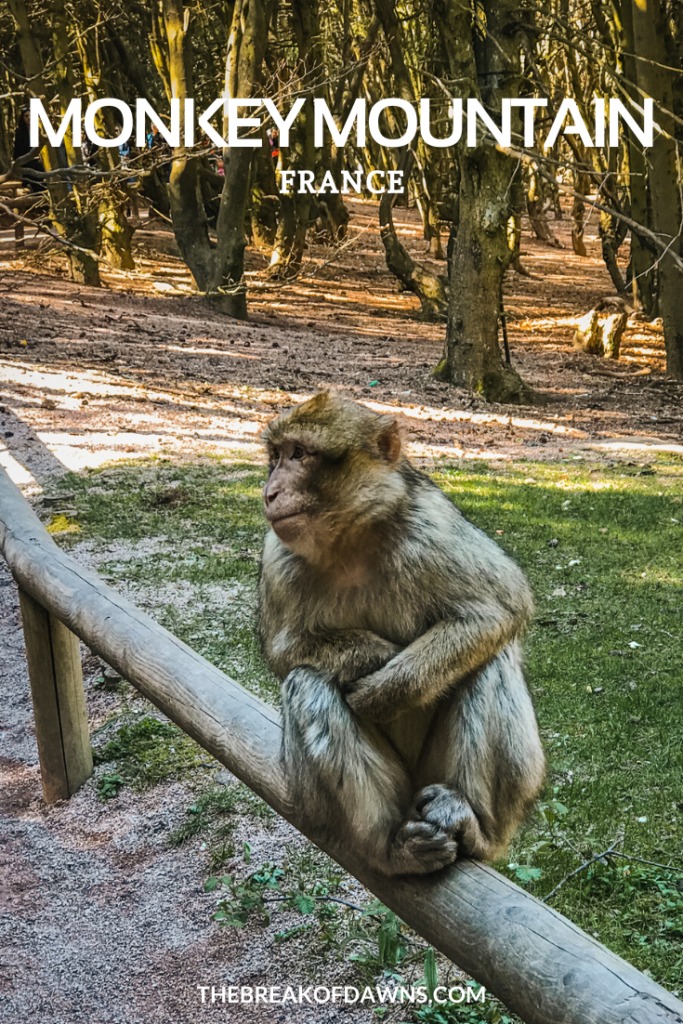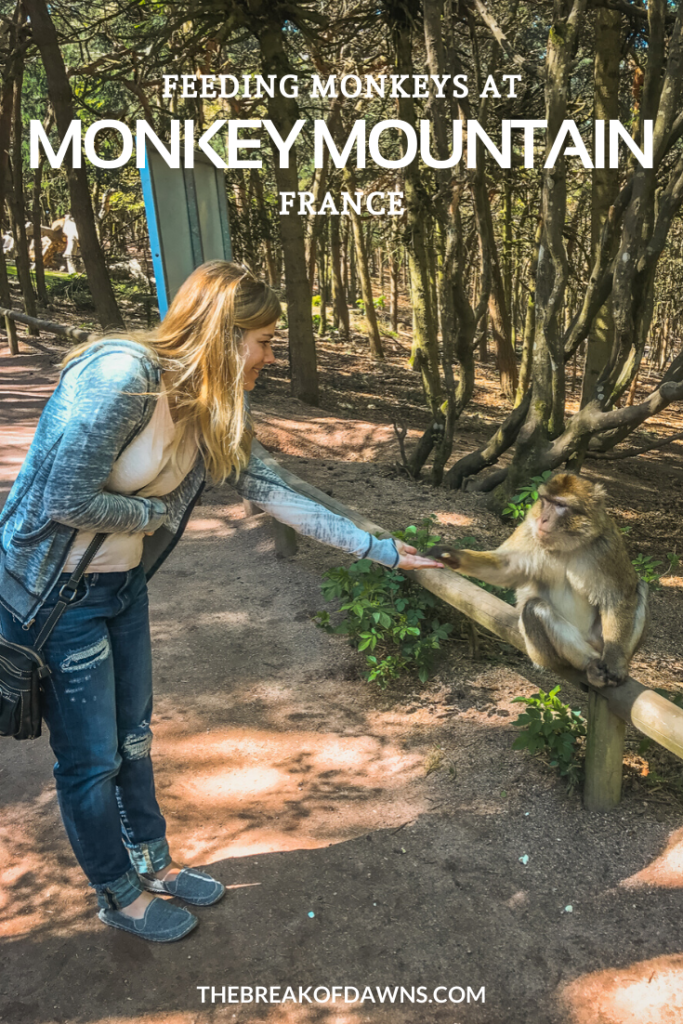
One warm autumn Sunday in Germany, Andy wakes me up to tell me he has a surprise. After two hours on the road and crossing the border into France, we drive through a village and start climbing up a forested mountain. I begin looking around at the small signs with arrows pointing certain ways and then realize they have monkeys on them! Little did I know what kind of treat I was in for here at Monkey Mountain.
Here’s a Mountain Full of Monkeys in France:
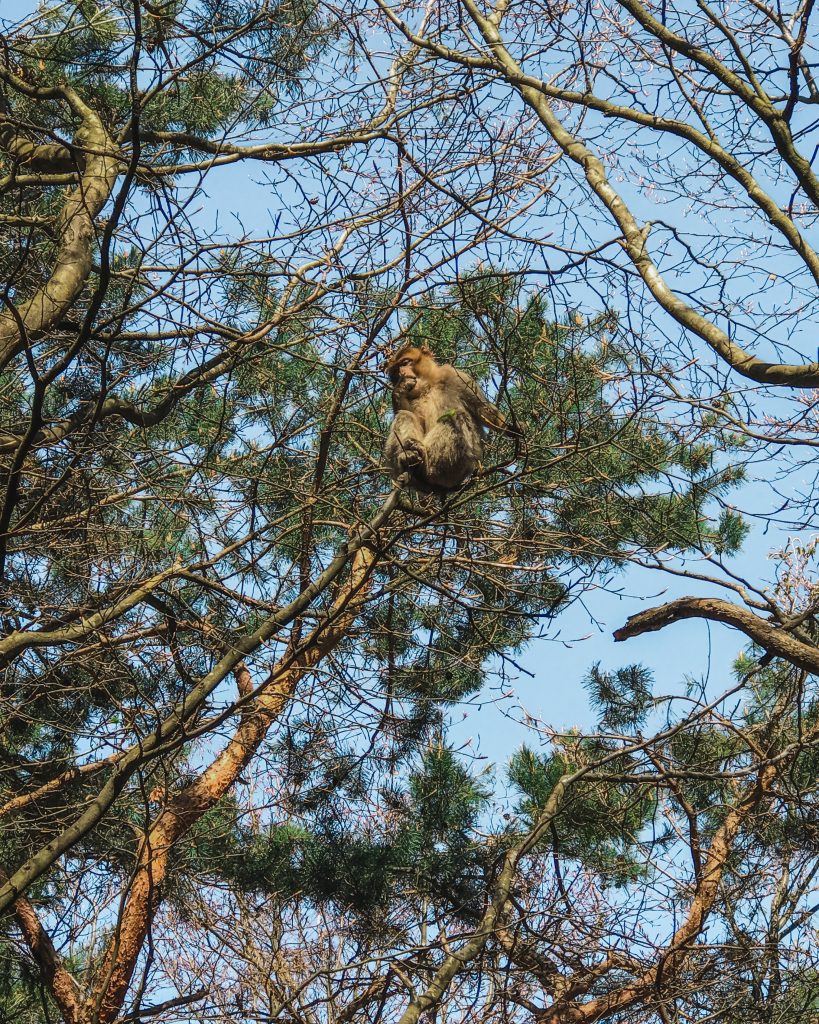
About the Monkeys
The monkeys that thrive in this French park are the Magot species of Barbary Macaques, hailing from Northern Africa, Algeria and Morocco. Living in forests and mountainous, rocky canyons and cliffs, they are used to experiencing terrestrial winters with multitudes of snow.
Most Barbary Macaques are native to Asia and must live in a warm environment to survive. Of the 21 species of this monkey, only the Magot breed can endure winters, allowing them to live outside year-round in the French environment. There are around 200 of these monkeys in the park, consisting of 60 acres at the top of the mountain. These 200 monkeys account for 10% of all Magot species of Barbary Macaques left in the wild.
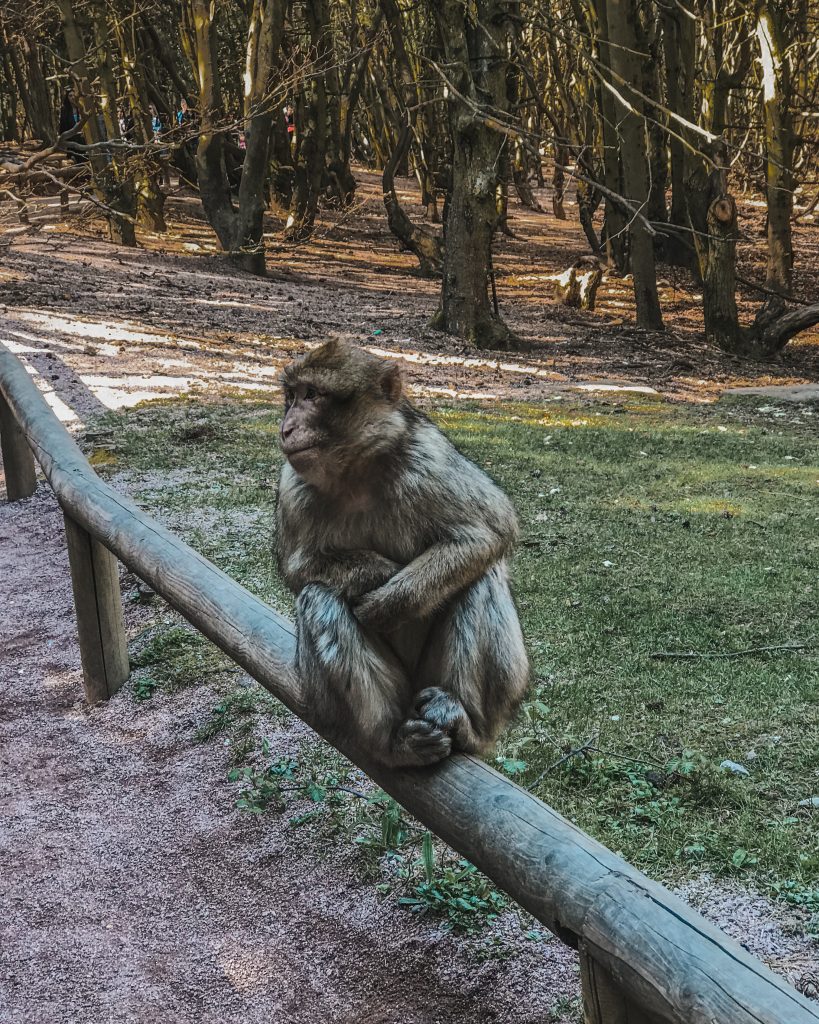
The History of Monkey Mountain
Opening in 1969, the goal of Monkey Mountain is to hopes of create an environment for them thrive without the threat of endangerment. Since the 1970s, the population of the monkeys have declined immensely. In 1978, there were about 23,000 in the wild but only around 8,000 today, forcing them to join the endangered species list. The main cause of endangerment to the Magot is loss of habitat through excessive logging, overgrazing and illegal trading.
The main purpose of Monkey Mountain is to save this species from extinction and the park takes great action to ensure that. Staffers aim to raise awareness about the monkey’s endangerment while also recruiting scientists to study their behaviors. The environment at Monkey Mountain gives researchers the perfect opportunity for that. They have now determined over 100 different communication methods between the monkeys through sounds and gestures.
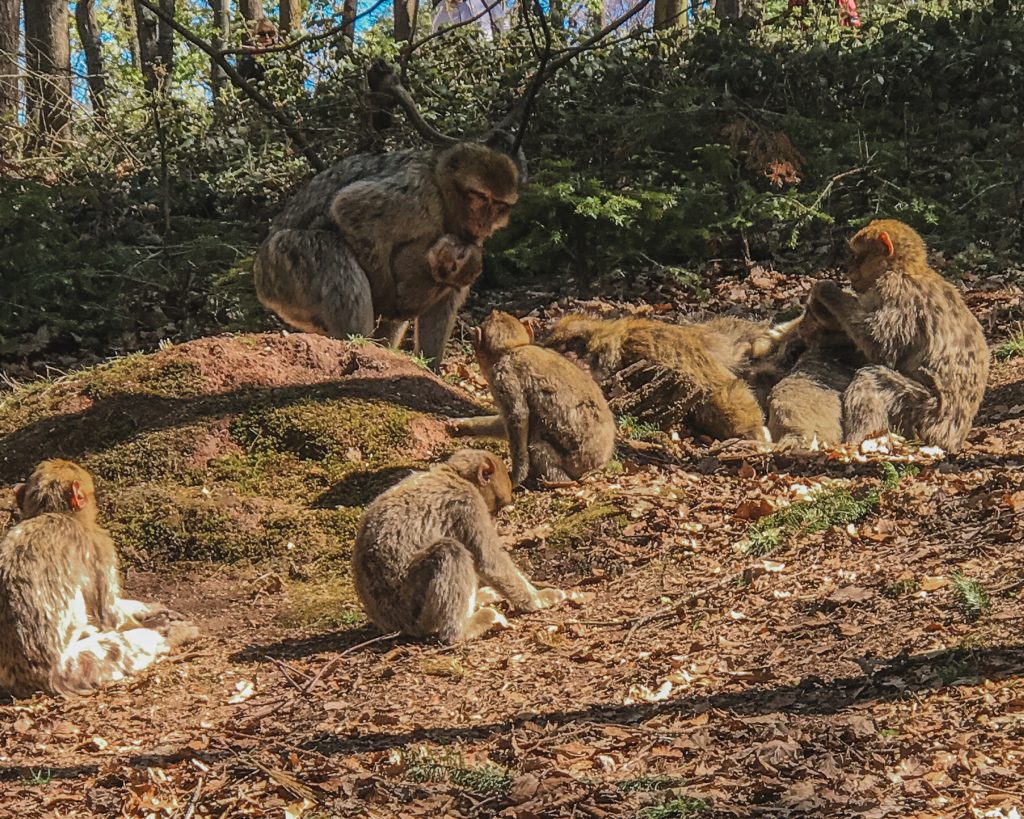
The reservation they’ve created for the monkeys here allows them to breed in a safe environment, strengthening the population. Monkey Mountain allows the Magots to form groups so when they’re reintroduced to the wild, they stand a better chance of survival. Since the park opened in 1969, they’ve reintroduced around 600 monkeys back to their native land in the Moroccan Middle Atlas.
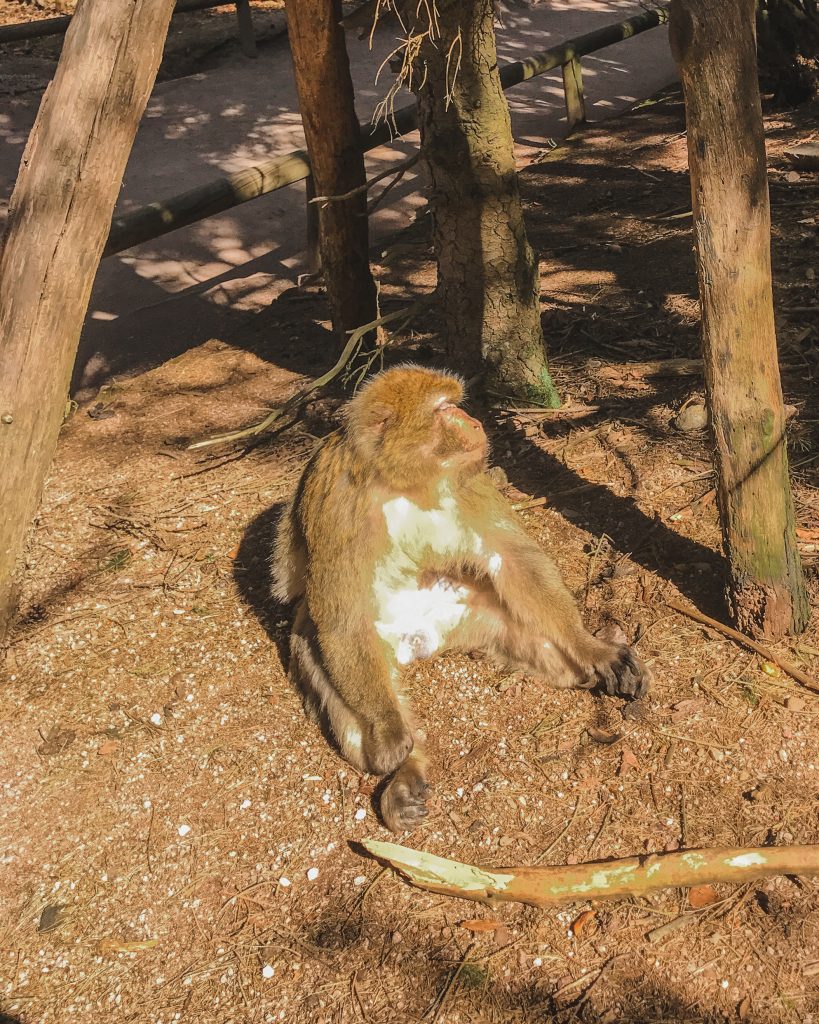
Our Experience at Monkey Mountain in France
I’m a monkey fanatic. I know, that’s what everyone says! But really, since I was a kid I’ve had a monkey obsession, even claiming I’d be the next Jane Goodall when I grew up. When I visit a zoo, whoever I’m with usually has to tear me away from the monkey observatories because I could spend hours there. There aren’t many more things I enjoy doing than observing orangutans swinging around on branches and enormous gorillas caring for their young so gently. When I began seeing signs with little monkeys on them here, I felt as giddy as I was when I was 5 years old staring through the double-paned glass at the apes in my local zoo.
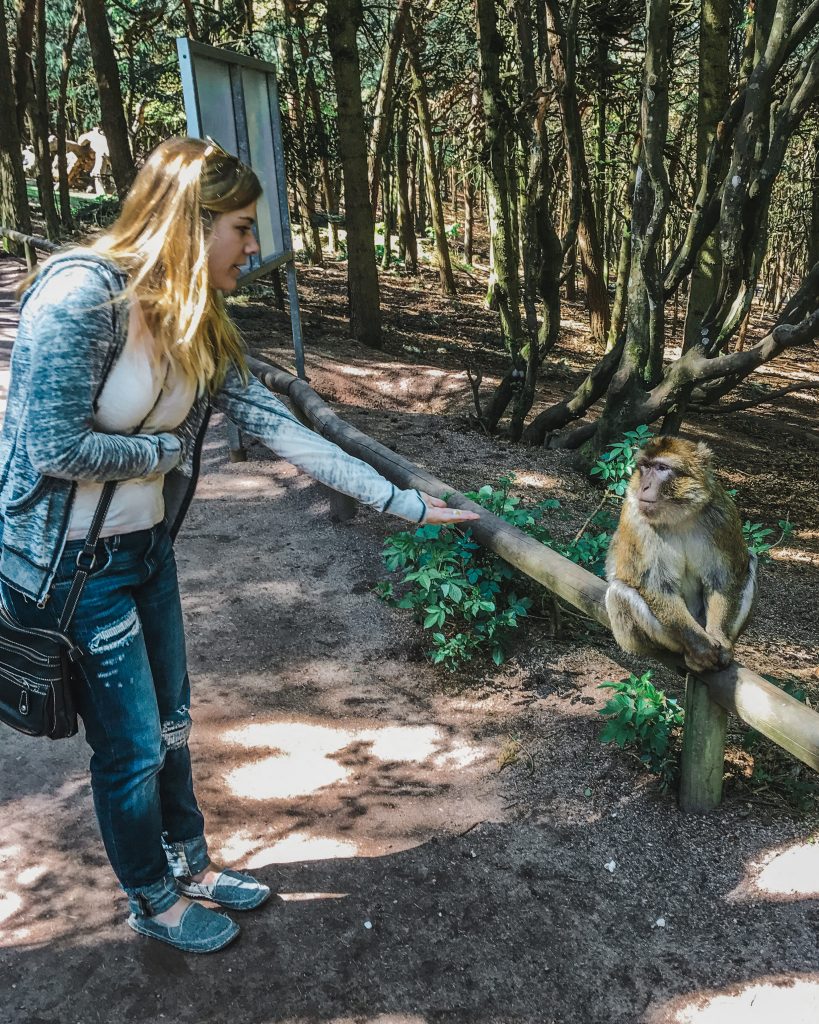
After parking, we walk to the entrance of monkey mountain and pay our fees of around 10 Euro. Next we come upon a massively tall gate with a tour guide waiting for everyone to pile in. As he lays down a few ground rules, we’re also told we can actually feed the monkeys here! What? Feeding them popcorn?! That’s all I needed to hear to tone out whatever else he may have said.
Walking through the gate, he hands us each a handful of popped kernels. Winding trough the dirt paths and the forest, it’s not long before scores of monkeys can be seen.
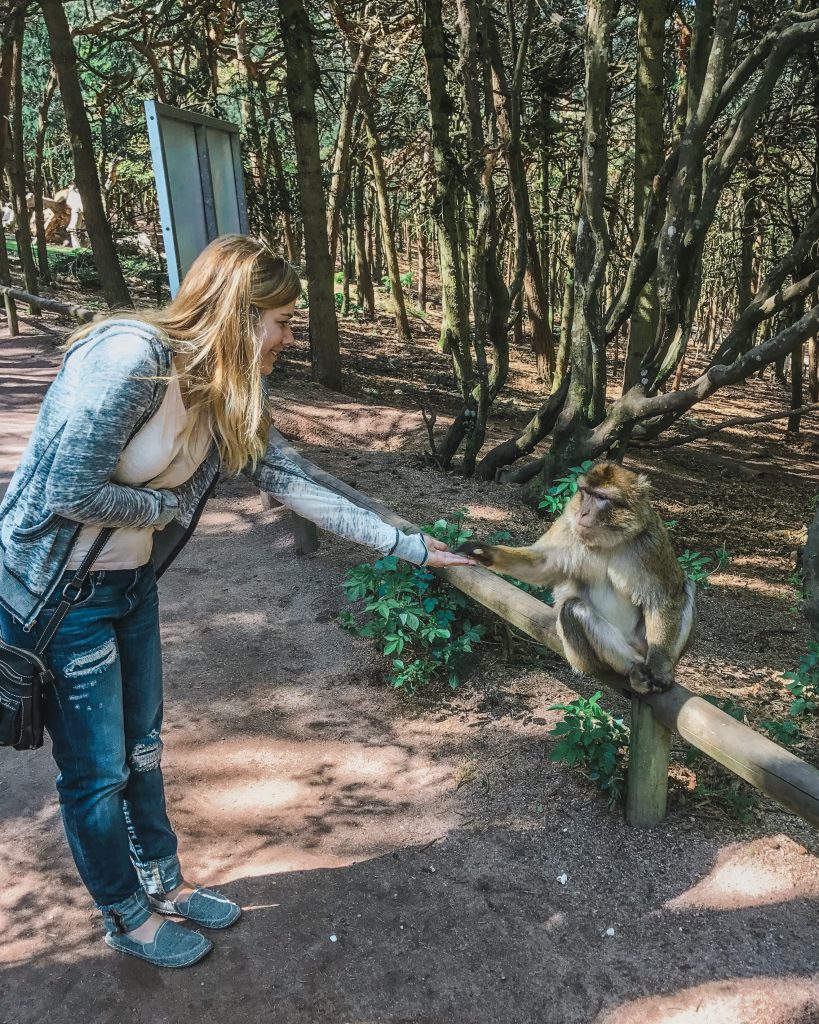
There was one monkey, resembling that of an old wise grandpa, patiently waiting for anyone who wanted to feed him. Here’s my chance! I slowly approach him, extending my arm out with the popcorn. At first he acted like he was ignoring me, not phased by this chick who’s trying to feed him popcorn. I thought maybe he was full because the place was packed with people but, with a little patience and to my surprise, he reaches his hand out to mine and snags the piece out of my palm. The smile on my face says it all: I was ridiculously tickled to death by this!
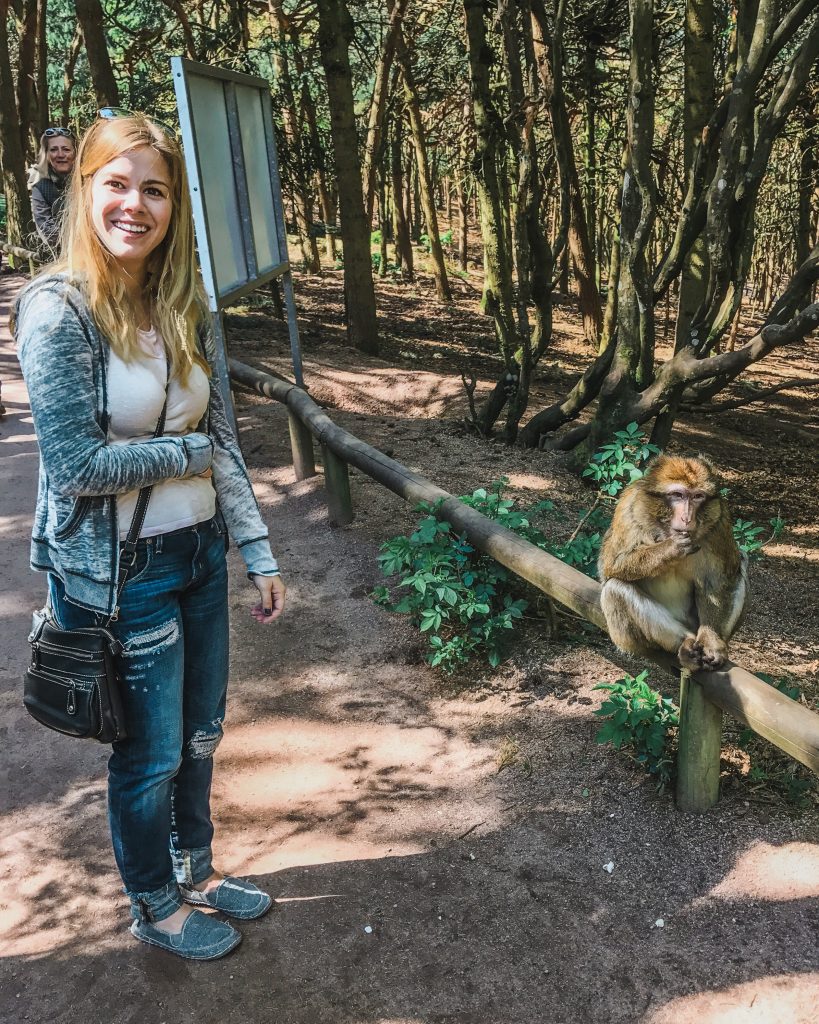
I could’ve cried. Never in my life have I been this close to these amazing creatures but here I was!
We walk a little further and stumble upon an open area where multiple monkeys are running around, playing and screeching at each other. A staff member walks up to the tree and lays out little piles of food in various spots. Out of the surrounding trees, multiple monkeys come running for feeding time. Some show signs of aggression towards each other, pushing them away from their precious food that for once isn’t popcorn. We sat on this bench for a long while watching them interact with one another.
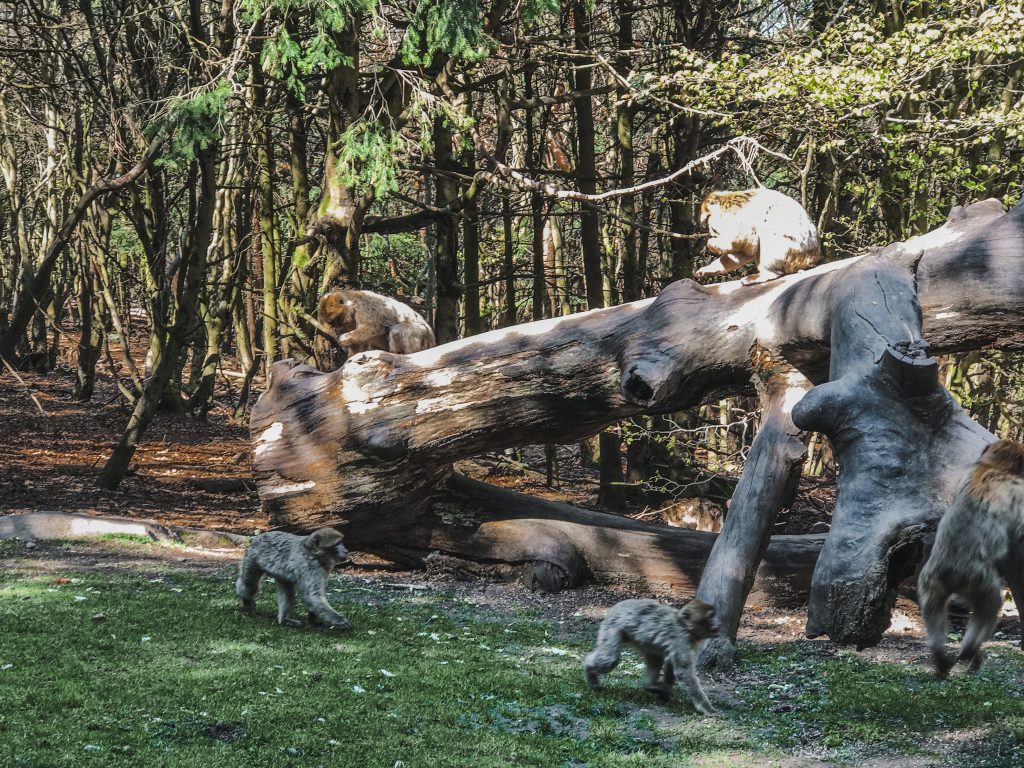
Interestingly enough, the monkeys here organize themselves into social circles in various parts of the park, claiming their territory. We witnessed one that was apparently getting too close to a mother and her children, apparent by her aggressive howl. Walking through the park, the sounds of monkeys screeching and growling can be heard as a pack attempts to ward off intruders from their trees. While they may be aggressive towards one another, the monkeys here are kind to humans and have never attacked.
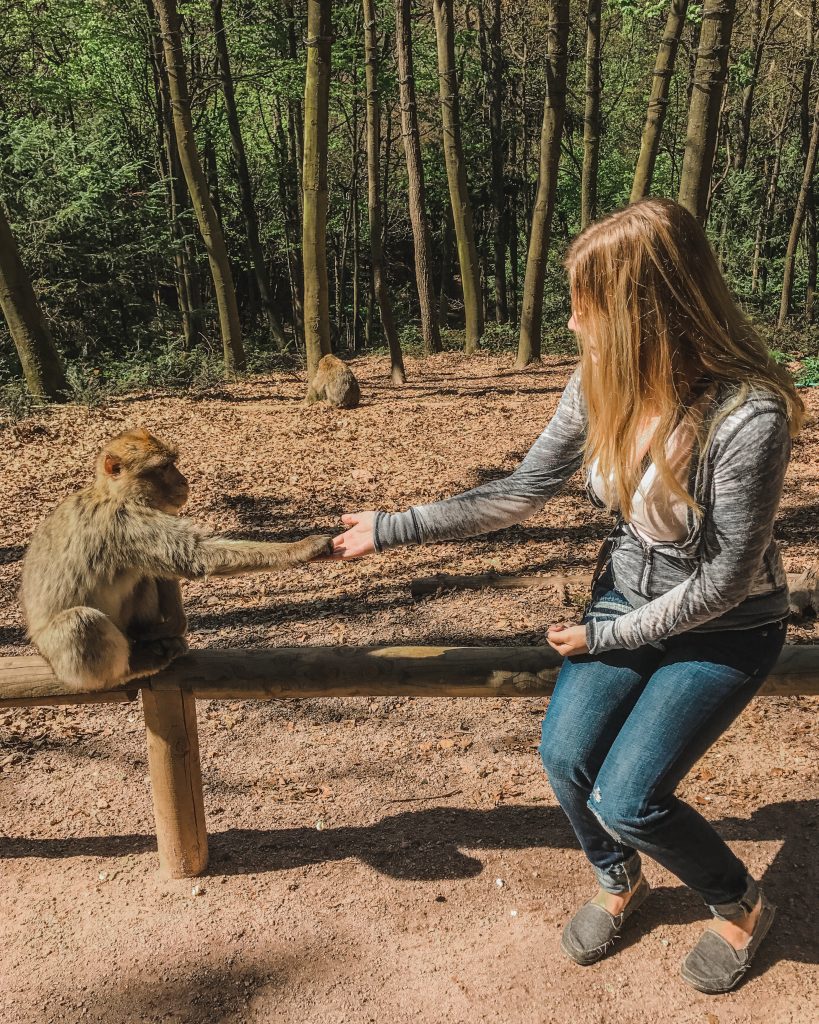
The walk through the park takes about an hour but we spent much longer than that.The mistake that I made, which I’m sure most people do as well, was feeding the monkeys at the beginning out of pure excitement but then my popcorn was gone. My husband was smart and rationed his popcorn so we’d have some more to give out.
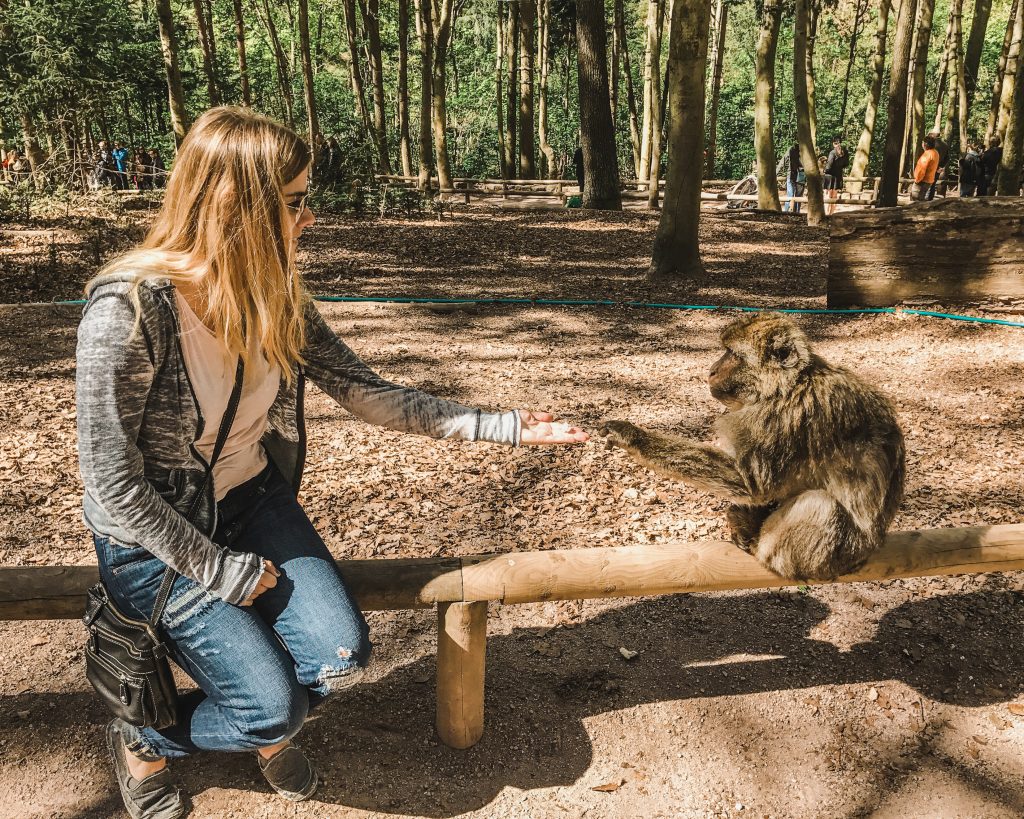
Along with the unique experience of feeding the monkeys, Monkey Mountain gives a perfect opportunity to view these monkeys in a “natural” habita. Families, complete with a father, mother and their children, can be seen throughout the park.
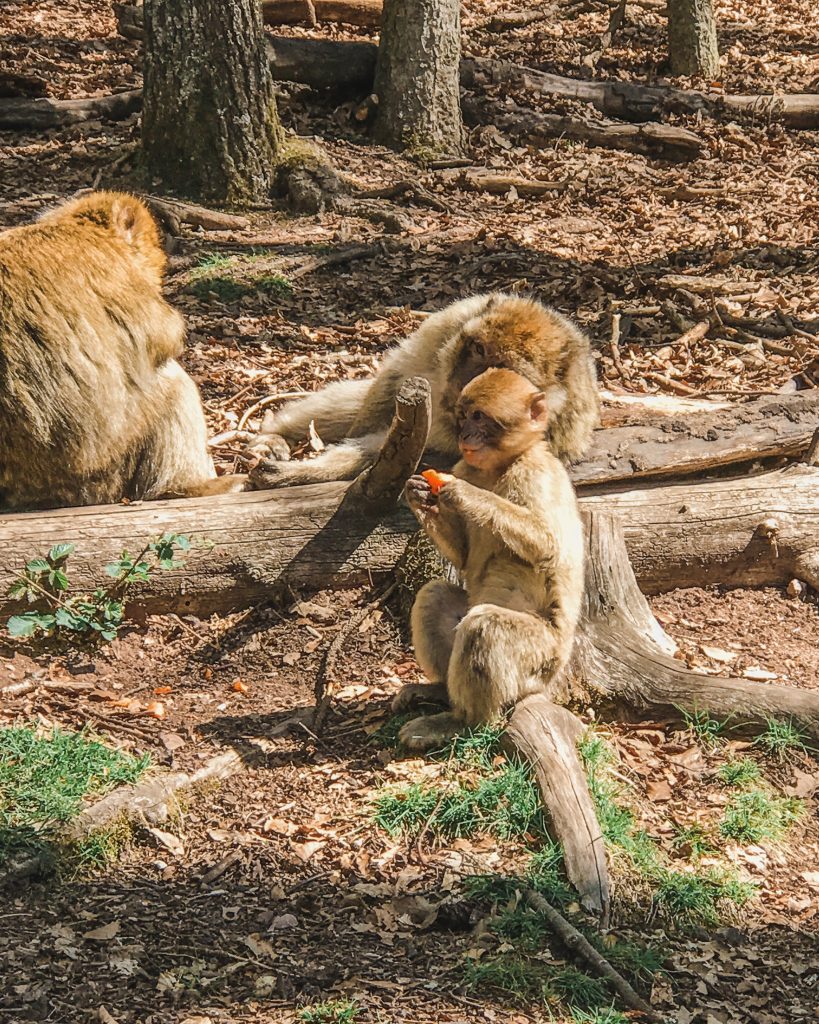
There are also those who seem sort of lonely, like the odd ball out who hasn’t found a family and it breaks your heart a bit. Various pieces of fruit are strewn around the grounds of the park where the monkeys can be seen munching away at an apple, just like a human would be.
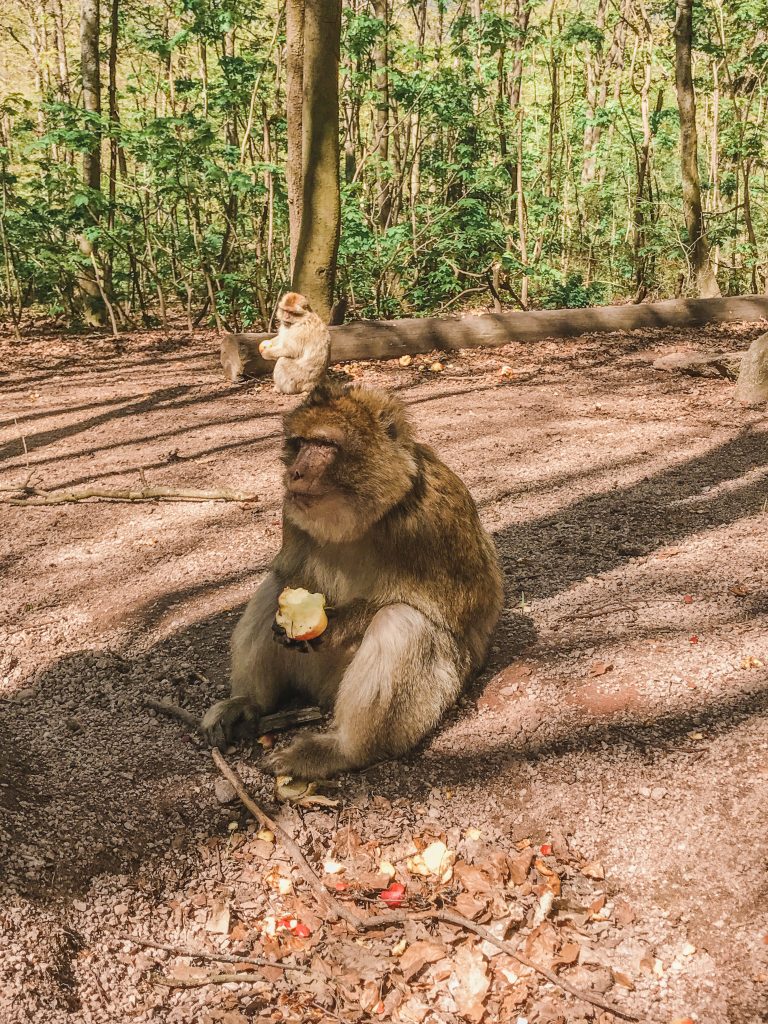
Monkey Mountain in France is one of the greatest observation adventures I’ve had. While I love zoos and all, there’s not many places you can interact with such a special creature like you can here. I’d pay €9 over and over again to reenact this incredible experience.
Read More European Travel Posts Here
Like This Post? Pin It!
